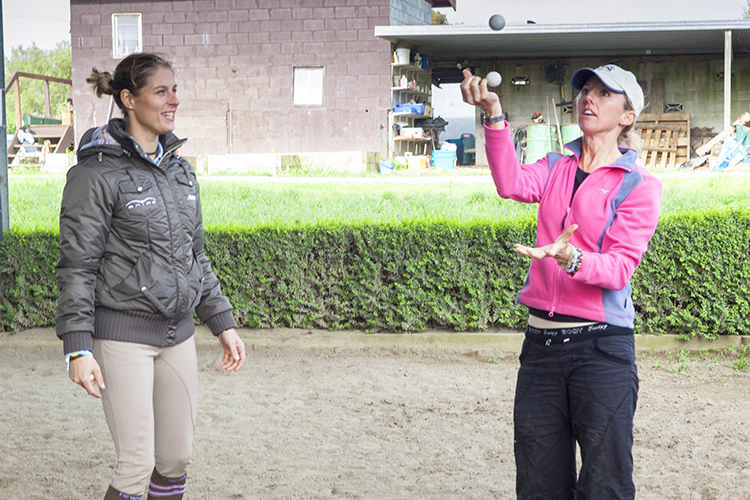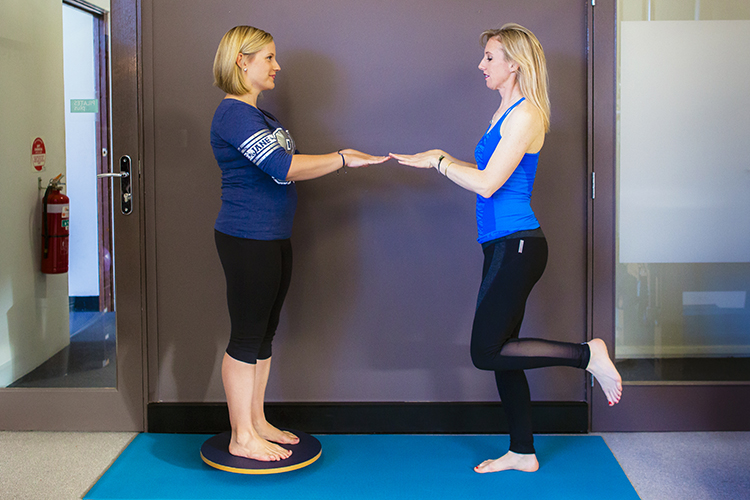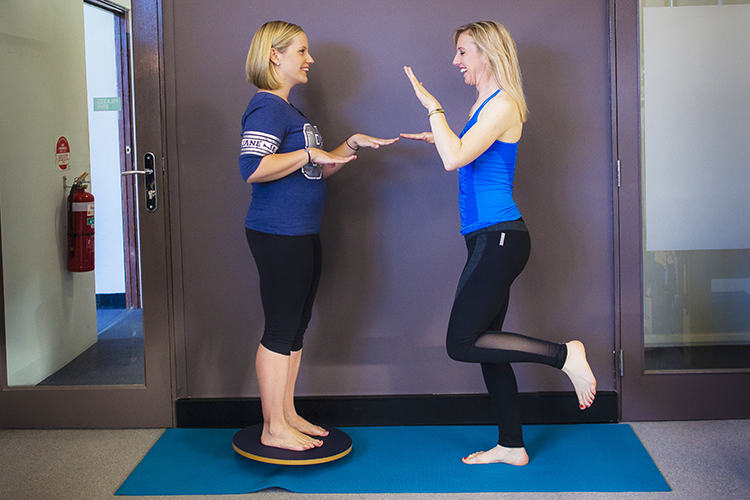The precision of dressage demands good reaction from the rider. There is no point in feeling the stimulus from the horse, but not being able to react quickly enough. Udo Bürger tells us that riders must be, “bold, agile and relaxed.” Obviously knowing your craft well along with a good amount of “match practice” will improve your reaction ability no end, but also good fitness and body awareness can help; having the ability to move your body exactly how you want, to the degree you want, as quickly as you want and as accurately as possible. La Guérinière speaks of such things right from the start when mounting the horse, which, “…..must be made with much grace, decisiveness and agility.”
Fast reaction is an important skill to have as a rider. Reaction is the speed which you respond to a specific stimulus. The quicker we react to a situation, or as la Guérinière defines as, “at the moment (the horse) commits an error,” the less of an issue it becomes. For example, if you react to your horse slightly leaning against your inside leg quickly, it is less likely that that slight lean turns into his inside hind leg planting itself too far to the inside of the track leading to crookedness. You want to correct things before they turn into big issues that the judge can see! Fast reactions can allow you to whisper to your horse via your aids, rather than shout. General Decarpentry tells us that dressage requires aids that are, “Subtle and discreet”.
In dressage, as in other riding, you need to be making constant, tiny adjustments; a quiet conversation with your horse rather than sitting and doing absolutely nothing and reacting only when a big problem arises, rather than nipping it in the bud, or alternatively locking onto your horse with your aids, deadening him. General Decarpentry give us an example, “To produce impulsion, the legs always act by brief contacts with the horse’s body. Any prolongation of this contact, any pressure with or without increase in strength, is detrimental to the creation or the development of impulsion.”
“It is the briefness of these successive contacts, this series of shocks produced by their repetition that is the essence of the impulsive action of the legs, and pressure is used only to maintain the degree of impulsion that has previously been obtained by the “attacks””.
Erik Herbermann mentions that one of the criteria for correct rising trot is that, “The rider has a mobile, or dynamic, centre of balance which moves between the knee and seat.”
Knowing your horse well and therefore being able to better anticipate his reaction is beneficial, but we all know horses are their own being, and flight animals can themselves react quickly and suddenly to stimuli. We need to be able to keep up.
Good reactions also help you from coming unstuck if your horse finds himself unbalanced, or when he tries to unbalance you with a big buck! Age can also have an impact. The older you get, the slower reaction time becomes. More reasons to train to improve this aspect.
Your riding ability and confidence levels will also affect reaction and so will levels of pressure. Reaction time decreases as pressure increases. Therefore extra reaction training is important for more novice riders who are still learning the ropes, as well as elite athletes under pressure to perform well at the Olympics.
A sharp and alert brain will also have an affect, so make sure your lifestyle helps support this. Good nutrition, sleep patterns and positive thought patterns will be of great benefit…..and no hangovers the day of competition, people!
It’s harder to train reaction on the horse. If you are a dressage rider, you could ride track work or take on a small event class, but training, systems such as overspeed training or just training yourself to be quicker than needed is not always conducive to harmony with your horse. That is why it is good to train these methods out of the saddle.
Boxing
Watch a video clip of Tyson or Ali boxing and tell me the sport isn’t good for reaction. Those guys are fast! The added bonus of boxing is that it’s great for your cardio, and therefore improves endurance, so you can perform at your peak right to the end of your training session or your test. You have to move fast with control, and think quickly, while working from the core. I spoke to boxer and personal trainer Trent Simpson about the benefits:
“Boxing is a high intensity full body workout, which challenges both the aerobic and anaerobic metabolism system. Technique requires the individual to use all parts of the body, starting from the ground up, to produce power for the punch. This power is transferred through the kinetic link from the leg drive, hip rotation, core activation and finally driving the arm from the body to deliver the punch. Boxing is a fun way to burn fat, tone up and get fit.”
Another big benefit to boxing which is essential to riders, is awareness of what’s going on around you, including your opponent, or in the rider’s case, the horse. Trent continues, “Boxing requires good rhythm, footwork, and the ability to recognise your surrounding as when facing an opponent, you are looking to avoid and block punches as well as return punches. It’s a very tactical sport that requires both great mind and body activation, plus it is a great way to reduce stress.”
And how often should we use it as a cross training activity? “As boxing is considered to be a high intensity workout, adequate rest is required. Two to three, one hour sessions could be included to the individuals training regime when taking into account other training and fitness levels. Training sessions would include skipping, punching on punching bags and focus mitts. This Improves an individual’s timing, strength and rhythm.
“A good coach will focus on your technique. If they don’t get your foot position and stance correct from the outset, you know they haven’t been trained properly. Footwork is the number one priority.”
 Juggling
Juggling
Not as energetic as boxing, juggling is a simple (if not always easy), cheap exercise that also helps with reaction. The added benefit is that you can do it almost anywhere and can do it on your own; no excuses that you didn’t have anyone to practice with. Juggling will help your hand/eye co-ordination, sharpen your brain but also teach you to react from a place of relaxation, not tension. It also helps improve your peripheral vision and teaches your body to multi-task with rhythm. This exercise is a favourite of dressage champion Adelinde Cornelissen.

 Slapping Hands
Slapping Hands
You can grab a friend and have a laugh with this final exercise. Two people face each other with their hands out, palms down, fingers touching. One person tries to hit the top of the other person’s hand and the second person tries to pull their hand out of the way before they get hit. If that’s not enough of a challenge, you can try it standing on one leg, or even on a wobble board if you like to live on the edge.
Rebecca Ashton is a Qualified Pilates Instructor (UK CYQ Level 3), and a BHS Trained and EA Accredited Dressage Coach (Level 1). Read more articles in this series below:


